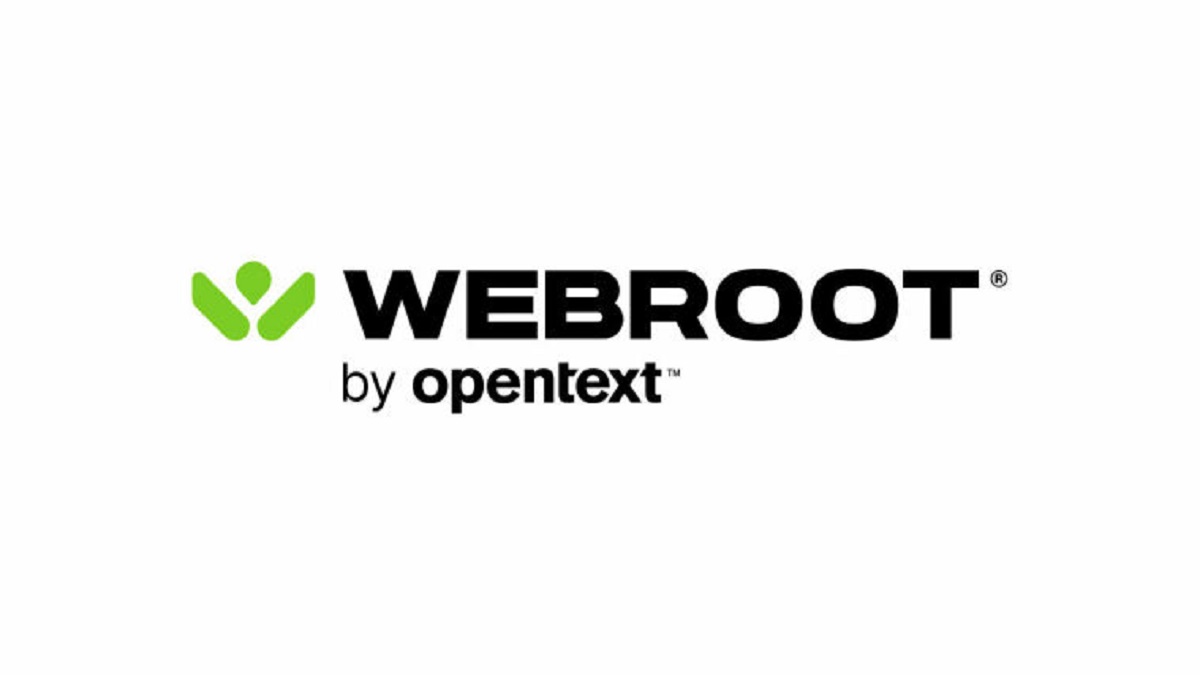Introduction
The dark web is a mysterious and intriguing part of the internet that has gained significant attention in recent years. Unlike the surface web that most of us are familiar with, the dark web is a hidden network that requires specialized software and configurations to access. It is often associated with illicit activities, providing a platform for anonymous communication, illegal marketplaces, and even cybercriminal forums. In this article, we will explore the ins and outs of accessing the dark web on your laptop.
While the dark web offers a cloak of anonymity, it is important to note that not everything on this hidden network is necessarily illegal. There are legitimate reasons why individuals may want to explore the dark web, such as accessing journalist resources, seeking anonymous support forums, or engaging in privacy-focused communication. However, it is crucial to tread carefully, as the dark web also harbors significant risks and potential dangers.
Before we delve into the process of accessing the dark web on your laptop, it’s essential to understand that doing so comes with certain legal and security considerations. It’s crucial to have a clear understanding of what the dark web is, its potential risks, and the precautions you should take before venturing into this hidden realm. Let’s explore more about the dark web and the necessary precautions to ensure your safety in the following sections.
What Is the Dark Web?
The dark web is a part of the internet that is intentionally hidden and inaccessible through standard web browsers. Unlike the surface web, which includes websites that can be accessed through search engines like Google and Bing, the dark web is comprised of websites that are only accessible through specialized software like the Tor browser.
One of the primary features that distinguishes the dark web from the surface web is its anonymity. Users can browse the dark web without revealing their identity or location, making it an attractive platform for those seeking privacy and anonymity.
Within the dark web, much of the activity takes place on a hidden network called Tor (The Onion Router). Tor routes internet traffic through a complex system of relays and encryption layers, making it extremely difficult for anyone to track a user’s online activities. This layer of anonymity enables users to access websites and services that are not reachable through regular browsers.
While the dark web has been associated with illegal activities such as drug trafficking, weapon sales, and hacking services, it’s important to note that not everything on the dark web falls into this category. In fact, the dark web also hosts legitimate websites that prioritize privacy and security, such as anonymous support forums, whistleblower platforms, and encrypted messaging services.
It’s crucial to understand that the dark web is not inherently illegal. Some users explore the dark web out of curiosity or to gather information that may be unavailable on the surface web. However, the hidden nature of the dark web does attract criminal elements who exploit its anonymity for illicit purposes.
It’s important to exercise caution and vigilance when navigating the dark web. Understanding the risks associated with accessing the dark web is essential to ensure your safety. In the following sections, we will explore the legal aspects and potential risks of accessing the dark web, along with the necessary precautions you should take before venturing into this hidden realm.
Is It Legal to Access the Dark Web?
The legality of accessing the dark web varies from country to country and depends on the specific activities taking place. It’s important to note that while the dark web itself is not illegal, certain activities conducted on it may be in violation of the law.
In many countries, the act of accessing the dark web is not illegal, as it falls under the realm of free access to the internet. However, engaging in illegal activities on the dark web, such as purchasing drugs, weapons, or engaging in cybercrime, is illegal and can lead to severe legal consequences if discovered.
It’s crucial to understand that law enforcement agencies are actively monitoring and taking action against individuals involved in illegal activities on the dark web. They employ various techniques, including undercover operations and tracking cryptocurrency transactions, to identify and apprehend criminals.
Additionally, some countries have imposed legal restrictions on accessing the dark web due to concerns around national security and the potential for criminal activities. It’s essential to familiarize yourself with the laws and regulations of your country to ensure you are not unintentionally breaking the law.
It’s worth noting that even if accessing the dark web is legal in your country, engaging in illegal activities can have severe consequences, both legally and ethically. Therefore, it is crucial to approach the dark web with caution and use it responsibly, respecting the laws and regulations of your jurisdiction.
If you are unsure about the legality of accessing the dark web in your country, it is recommended to seek legal advice or consult with relevant authorities to avoid any potential legal issues.
In the next section, we will discuss the risks and potential dangers associated with accessing the dark web, highlighting why it’s crucial to approach it with caution and take necessary precautions to protect your online safety and privacy.
Understanding the Risks of Accessing the Dark Web
Accessing the dark web comes with inherent risks and potential dangers that users must be aware of. While the dark web offers anonymity and privacy, it is also a breeding ground for illegal activities and exposes users to various security threats.
One of the primary risks of accessing the dark web is encountering malicious actors and cybercriminals. The dark web is known for hosting marketplaces where illegal goods and services are bought and sold, including drugs, stolen data, hacking tools, and counterfeit documents. Engaging with these illicit platforms puts users at risk of falling victim to scams, identity theft, or unknowingly participating in illegal activities.
Another significant risk is the potential exposure to malware and viruses. Many websites on the dark web are designed to distribute malware or exploit vulnerabilities in users’ systems. These malicious programs can compromise the security of your laptop and steal sensitive information such as login credentials, banking details, or personal data.
Furthermore, the anonymity of the dark web can create a false sense of security, leading users to share personal information or engage in risky behavior. It’s important to remember that anonymity does not equate to invincibility, and law enforcement agencies actively monitor and investigate illegal activities on the dark web. Engaging in illegal activities can lead to personal legal consequences, including criminal charges and prosecution.
Additionally, accessing the dark web increases the risk of being targeted by hackers and cyberattacks. As a hidden network, the dark web attracts skilled hackers who may employ various techniques to gain unauthorized access to your computer or exploit vulnerabilities in your system. Therefore, it’s crucial to ensure that your laptop has robust security measures in place before venturing into the dark web.
Lastly, exposure to disturbing and illegal content is another risk associated with the dark web. Users may inadvertently stumble upon explicit material, violent content, or other illegal activities that can be deeply unsettling. It’s important to prepare yourself mentally and emotionally for encountering such content and to have strategies in place to avoid or report it.
Understanding these risks is essential for anyone considering accessing the dark web. In the next section, we will discuss the precautions you should take before venturing into the dark web to protect your online safety and privacy.
Precautions Before Accessing the Dark Web
Before venturing into the dark web, it is vital to take necessary precautions to protect your online safety and privacy. By implementing these precautions, you can mitigate the risks associated with accessing the dark web and ensure a more secure browsing experience.
1. Update your laptop: Ensure that your laptop’s operating system, web browser, and security software are up to date. Regularly installing updates and patches helps protect against known vulnerabilities that cybercriminals may exploit.
2. Use a reliable antivirus program: Install a reputable antivirus program on your laptop to detect and remove any potential malware or viruses you may encounter while browsing the dark web. Keep the antivirus software updated to stay protected against new threats.
3. Enable firewall protection: Activate a firewall on your laptop to act as a barrier between your device and potential threats from the dark web. A firewall adds an extra layer of security by monitoring and controlling incoming and outgoing connections.
4. Utilize a Virtual Private Network (VPN): Consider using a VPN service before accessing the dark web. A VPN encrypts your internet connection, ensuring your online activities remain private and preventing others from monitoring your browsing behavior.
5. Create a dedicated email address: Use a separate email address solely for dark web activities. This helps compartmentalize your online presence and reduces the risk of exposing your primary email account to potential threats.
6. Avoid revealing personal information: Exercise caution when providing personal information on the dark web. Never share sensitive details like your real name, address, phone number, or financial information, as this increases the risk of identity theft or other forms of cybercrime.
7. Be skeptical of links and downloads: Practice suspicious thinking when encountering links or downloading files from the dark web. Verify the source and reputation of websites and avoid clicking on suspicious links or downloading unknown files that may contain malware.
8. Use strong, unique passwords: Create strong and unique passwords for any accounts you may create or access on the dark web. Avoid reusing passwords across different platforms, as this can compromise the security of your other accounts in case of a data breach.
9. Never trust blindly: Be cautious when interacting with sellers, services, or individuals on the dark web. Trust is difficult to establish in this anonymous environment, and scammers are prevalent. Exercise skepticism and conduct thorough research before engaging in any transactions or sharing sensitive information.
By following these precautions, you can enhance your safety when navigating the dark web. Remember, the dark web can be a dangerous place, and vigilance and security measures play a crucial role in protecting yourself from potential threats.
Step-by-Step Guide to Access the Dark Web on Your Laptop
Accessing the dark web requires specific software and configurations. Follow this step-by-step guide to safely and securely access the dark web on your laptop:
Step 1: Install the Tor Browser
The Tor Browser is the most common and widely used browser for accessing the dark web. Start by downloading and installing the Tor Browser from the official website (https://www.torproject.org/). It is available for Windows, macOS, and Linux.
Step 2: Connect to the Tor Network
Launch the Tor Browser and wait for it to connect to the Tor network. It may take a few moments to establish a secure connection. Once connected, the Tor Browser will open with a modified version of the Firefox browser.
Step 3: Configure Tor Browser Settings
Before accessing the dark web, navigate to the Tor Browser settings. Review and adjust the security settings according to your preferences. It is recommended to enable the highest level of security for privacy and protection.
Step 4: Understand the Dark Web URL Structure
Unlike traditional websites, dark web URLs use random strings of characters followed by the .onion extension. Examples of dark web URLs include http://example.onion. These unique URLs are necessary to access dark web sites.
Step 5: Utilize Dark Web Directories and Search Engines
For easier navigation on the dark web, utilize directories and search engines designed specifically for this purpose. Some popular directories include the Hidden Wiki, DeepDotWeb, and Onion Link.
Step 6: Exercise Caution and Verify Sites
When accessing dark web sites, be cautious and verify their reputation and authenticity. Avoid suspicious links and always exercise skepticism when interacting with sellers and services. Research and read reviews before engaging in any transactions.
Step 7: Use Encryption and Secure Communication
When communicating on the dark web, prioritize security by using encryption tools and secure communication methods. PGP (Pretty Good Privacy) encryption is often recommended for encrypted email communication.
Step 8: Maintain Anonymity
To ensure your anonymity on the dark web, avoid revealing personal information or using real identities. It is recommended to create a pseudonymous persona for engaging in dark web activities.
Step 9: Regularly Update Security Measures
Keep your laptop, operating system, and security software up to date. Regularly check for updates and patches to stay protected against any potential vulnerabilities.
By following these steps, you can safely and responsibly access the dark web on your laptop. Remember to exercise caution, prioritize security and privacy, and remain vigilant throughout your dark web journey.
Using Tor Browser: The Gateway to the Dark Web
When it comes to accessing the dark web, the Tor Browser is the most widely used and recommended tool. It serves as the gateway that allows you to explore the hidden depths of the internet with anonymity and privacy.
Tor, short for “The Onion Router,” is an open-source software that enables anonymous communication by encrypting and routing your internet connection through a vast network of relays. This network of relays makes it incredibly challenging for anyone to trace your online activities back to your physical location.
The Tor Browser, built upon the Firefox browser, is specifically designed to work with the Tor network. It provides you with a secure and private browsing experience while accessing the dark web. Here are some key features and benefits of using the Tor Browser:
1. Anonymity and Privacy: The Tor Browser encrypts your internet traffic and sends it through a series of relays, making it difficult for anyone, including your internet service provider and government agencies, to monitor or track your online activities.
2. Protection Against Tracking: The Tor Browser blocks third-party trackers, preventing websites from collecting your browsing data and providing a more secure online experience.
3. Circuit-based Routing: The Tor Browser establishes a new virtual circuit for each website you visit, preventing websites from linking your browsing activity and further enhancing your anonymity.
4. Enhanced Security Measures: The Tor Browser is designed to protect against certain types of attacks, such as browser fingerprinting and JavaScript exploits, which can compromise your security on the dark web.
5. Access to Onion Services: The Tor Browser allows you to access websites with .onion domains, which are exclusive to the dark web. These websites are not indexed by search engines and can only be reached through the Tor network.
When using the Tor Browser to access the dark web, it’s important to remember that while it provides a high level of anonymity, it is not foolproof. Certain tactics, such as social engineering and malware, can still pose risks to your privacy and security. Therefore, it’s essential to exercise caution, follow security best practices, and stay informed about potential vulnerabilities.
Moreover, the Tor Browser should not be used as a substitute for general cybersecurity practices. It’s important to maintain a secure and updated operating system, use a reliable antivirus program, and exercise caution when interacting with unknown websites or downloading files.
By utilizing the Tor Browser as your gateway to the dark web, you can navigate the hidden network with increased anonymity and privacy. However, it’s crucial to remain vigilant and follow security measures to protect yourself from potential risks and threats.
Setting Up and Configuring Your Tor Browser
Setting up and configuring your Tor Browser is an important step to ensure a secure and private browsing experience on the dark web. Follow these steps to properly install and configure the Tor Browser:
Step 1: Download the Tor Browser
Visit the official Tor Project website (https://www.torproject.org/) and download the latest version of the Tor Browser for your operating system (Windows, macOS, or Linux). Choose the appropriate version and language for your needs.
Step 2: Install the Tor Browser
Once the download is complete, locate the installation file and run it. Follow the instructions provided to install the Tor Browser on your laptop. The installation process is straightforward and similar to installing any other software.
Step 3: Launch the Tor Browser
After installing the Tor Browser, locate the program icon and launch the application. It may take a few moments for the browser to establish a connection with the Tor network. Be patient as the initial connection may take slightly longer than regular browsing.
Step 4: Configure Tor Browser Settings
Once the Tor Browser is launched, you can configure the settings to enhance your security and privacy. Click on the small onion-shaped icon in the top-right corner of the browser and select “Tor Network Settings.” Here, you can adjust various settings such as security level and cookie management based on your preferences.
Step 5: Customize Browser Preferences
Next, click on the menu icon (three horizontal lines) in the top-right corner of the browser and select “Options.” From here, you can customize various preferences, including privacy settings, font size, and language. Take the time to review and adjust these options according to your requirements.
Step 6: Check Tor Network Status
To ensure that your Tor Browser is properly connected to the Tor network, click on the small onion-shaped icon in the top-right corner of the browser and select “Check for Tor Browser Update” and then “Tor Network Settings.” The Tor Network Status should display as “Connected to the Tor network” if the connection is successful.
Step 7: Regularly Update the Tor Browser
Stay vigilant about updating the Tor Browser to the latest version. The Tor Project periodically releases updates to improve security and address any vulnerabilities. To check for updates, click on the menu icon and select “About Tor Browser.” If updates are available, follow the prompts to install them.
By following these steps to set up and configure your Tor Browser, you can establish a secure and private browsing environment when accessing the dark web. Regularly checking for updates and maintaining security best practices will help ensure a safer experience on the Tor network.
Navigating the Dark Web: Tips and Tricks
Navigating the dark web can be an exciting but challenging experience. With its hidden nature and vast range of content, it’s important to approach it with caution and employ certain tips and tricks to enhance your navigation and protect your safety. Here are some useful tips to help you navigate the dark web:
1. Research and Use Trusted Directories: Start by researching and utilizing trusted directories and search engines designed for the dark web. These platforms categorize and list various websites, making it easier to find what you’re looking for. Examples include the Hidden Wiki, DeepDotWeb, and Onion Link.
2. Verify Website Reputation: Before accessing a dark web website, take the time to research and verify its reputation. Read user reviews and discussions on forums to determine if a website is reliable and safe to visit. However, remember that opinions and experiences may vary, so exercise caution and use your judgment.
3. Practice Secure Communication: When engaging in communication on the dark web, prioritize security. Consider using encryption tools such as Pretty Good Privacy (PGP) for encrypted emails or other secure communication options. Protecting your identity and maintaining privacy is crucial in this hidden realm.
4. Understand Cryptocurrency: The dark web often operates with cryptocurrencies such as Bitcoin or Monero as a means of transaction. Familiarize yourself with the basics of cryptocurrencies to ensure you can navigate and conduct transactions securely. Be cautious of any cryptocurrency scams or phishing attempts.
5. Be Skeptical and Stay Safe: Exercise skepticism when browsing the dark web. Many websites may claim to offer illegal items or services that could be scams. Avoid providing personal information or engaging in activities that compromise your safety. Remember, your safety should always be your top priority.
6. Follow OPSEC Practices: OPSEC (Operational Security) practices are crucial when navigating the dark web. Use separate identities or pseudonyms, avoid sharing personal information, and compartmentalize your activities. Employing strong passwords and two-factor authentication is also crucial to protect your accounts.
7. Understand Appropriate Use: Before accessing the dark web, familiarize yourself with the legal and ethical boundaries. Illegal activities on the dark web can have serious legal consequences. Ensure that you are accessing the dark web for legal purposes and within the confines of your jurisdiction’s laws and regulations.
8. Preserve Your Mental Well-being: The dark web can expose you to disturbing and illegal content. It’s essential to be mentally and emotionally prepared for what you might encounter. Have coping mechanisms in place, and remember that you have the choice to leave any website or forum that makes you uncomfortable.
By employing these tips and tricks, you can navigate the dark web with increased confidence and better protect your safety and privacy. Remember, caution and vigilance are key when exploring this hidden realm.
Best Practices for Staying Safe on the Dark Web
The dark web can be a risky place, but practicing certain safety measures can help protect your security and privacy while navigating this hidden realm. Here are some best practices for staying safe on the dark web:
1. Use Tor Browser: Stick to using the Tor Browser when accessing the dark web. It provides the necessary encryption and anonymity features to browse securely. Avoid using other browsers or plugins that might compromise your anonymity.
2. Keep Software Updated: Regularly update the Tor Browser and other security software on your laptop. Updates often include patches to fix security vulnerabilities, ensuring you have the latest protections against potential threats.
3. Use Virtual Machines or Live Operating Systems: Consider using a virtual machine or a live operating system dedicated to accessing the dark web. These isolated environments offer an extra layer of protection by preventing potential malware or malicious scripts from affecting your main system.
4. Employ Strong Passwords: Use strong, unique passwords for any accounts you create on the dark web. Make sure to use a combination of uppercase and lowercase letters, numbers, and special characters. Avoid reusing passwords across different platforms to prevent unauthorized access to your accounts.
5. Enable Two-Factor Authentication (2FA): Whenever possible, enable two-factor authentication for your dark web accounts. 2FA adds an extra layer of security by requiring a second form of authentication, such as a unique code sent to your phone, in addition to your password.
6. Be Cautious with Personal Information: Avoid sharing any personal information on the dark web. This includes your real name, address, phone number, or financial details. Assume that any information you provide may be used against you or compromise your identity.
7. Avoid Clicking Unknown Links or Downloading Files: Exercise caution when it comes to clicking on unknown links or downloading files from the dark web. Malicious links or files may contain malware or viruses that can compromise your system. Verify the source and reputation before interacting with any content.
8. Encrypt Communications: Utilize encryption tools like PGP (Pretty Good Privacy) when communicating on the dark web. Encryption ensures that your messages remain private and secure, preventing unauthorized access to your conversations.
9. Stay Updated on Current Threats: Stay informed about current threats, scams, and vulnerabilities on the dark web. Regularly read security blogs, forums, and reputable sources to stay updated on the latest risks and techniques used by cybercriminals.
10. Trust Your Instincts: If something seems too good to be true or suspicious, trust your instincts and avoid it. Scammers and fraudsters operate on the dark web, and exercising caution is crucial to protect yourself from falling victim to their schemes.
By following these best practices, you can significantly enhance your safety while exploring the dark web. Remember, maintaining your security and privacy should be a priority in this hidden and sometimes treacherous online landscape.
Common Dark Web Terminology Explained
The dark web has its own unique set of terminologies and acronyms that can be confusing for newcomers. Understanding these terms is essential for navigating the dark web effectively and safely. Here are some common dark web terminologies explained:
1. Darknet: The darknet refers to a private network that is intentionally hidden and accessible only through specific software configurations. It is a subset of the internet that operates outside the reach of search engines and standard browsers.
2. Tor: Tor, short for “The Onion Router,” is a network of servers that allows users to access the dark web anonymously. It routes internet traffic through a series of relays and encryption layers, making it extremely difficult to trace a user’s online activities.
3. .onion: The .onion domain is unique to the dark web. Websites on the dark web often use this domain extension, which cannot be accessed through standard browsers. Examples include xyzsite.onion.
4. Silk Road: Silk Road was one of the most notorious dark web marketplaces that operated from 2011 to 2013. It gained notoriety for facilitating the buying and selling of illegal drugs, weapons, and other illicit goods and services.
5. Cryptocurrency: Cryptocurrency, such as Bitcoin or Monero, is the preferred form of payment on the dark web. These digital currencies provide a level of anonymity, making transactions difficult to trace.
6. Escrow: Escrow refers to a trusted third-party service that holds funds during a transaction on the dark web. It ensures that both parties fulfill their obligations before releasing the funds, reducing the risk of fraud or deceit.
7. Deep Web: The deep web refers to the vast portion of the internet that is not accessible through search engines. This includes password-protected websites, private databases, and other content that is not indexed by search engines.
8. Dark Web Marketplaces: Dark web marketplaces are platforms where various goods and services are bought and sold. These marketplaces operate on the dark web and cater to a wide range of illegal and illicit products, including drugs, weapons, counterfeit documents, and hacking tools.
9. Bitcoin Mixing: Bitcoin mixing, also known as tumbling, is a process used on the dark web to obscure the transaction history of bitcoins. It involves mixing bitcoins from multiple sources to make them more difficult to trace.
10. Doxing: Doxing refers to the act of uncovering and revealing someone’s private or personal information without their consent, often with malicious intent. It is considered a form of online harassment and invasion of privacy.
Understanding these common dark web terminologies will help you navigate discussions, forums, marketplaces, and other resources more effectively. It’s important to stay informed and remain cautious as you explore and interact within this hidden online environment.
Conclusion
The dark web is a fascinating and mysterious part of the internet that requires specialized software and configurations to access. While it offers anonymity and privacy, it also harbors risks and potential dangers that users must be aware of. Throughout this article, we have explored various aspects of accessing the dark web on your laptop, including what it is, its legality, risks, precautions, and navigation tips.
It is crucial to approach the dark web with caution and responsible behavior. Understanding the legal implications and potential risks associated with accessing the dark web is key to ensuring your safety and security. By following best practices such as using the Tor Browser, maintaining updated software, employing strong passwords, and practicing secure communication, you can enhance your privacy while navigating the dark web.
Remember, the dark web is not inherently illegal, and there are legitimate purposes for accessing this hidden network. However, it is essential to stay within legal boundaries and exercise caution when engaging in activities on the dark web.
Lastly, always prioritize your safety and well-being when navigating the dark web. Stay informed about the latest threats, scams, and vulnerabilities, and trust your instincts when encountering suspicious content or interactions.
By combining knowledge, vigilance, and the use of appropriate security measures, you can have a more secure and responsible experience while exploring the dark web on your laptop.

























